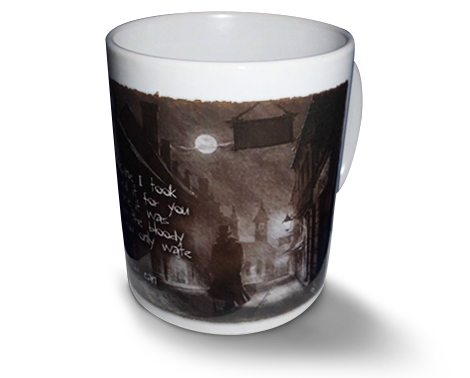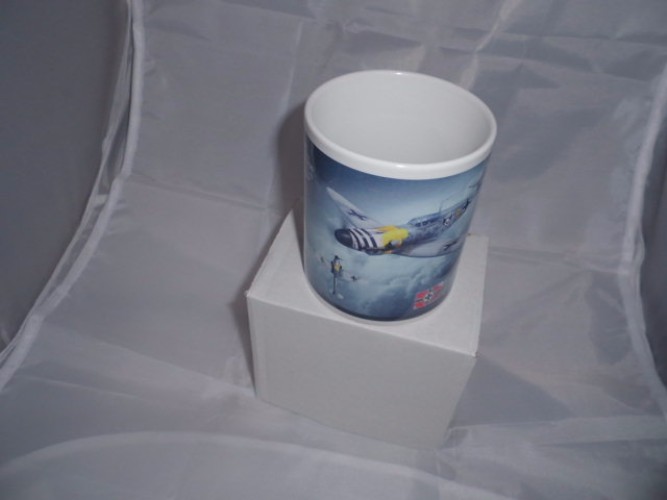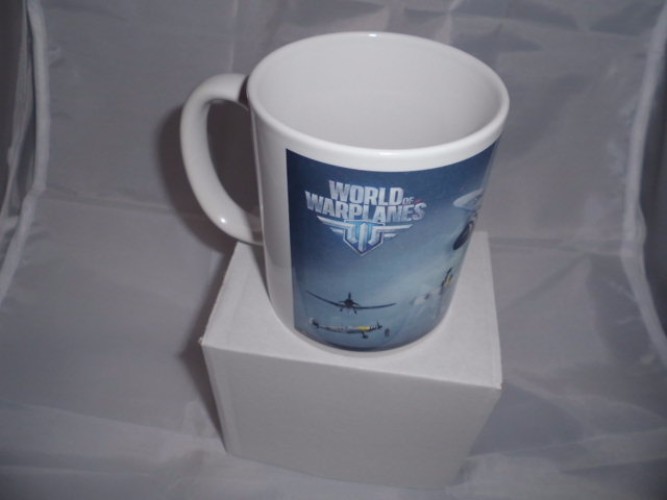Messerschmitt BF.109G Mug
11 oz Printed Messerschmitt BF.109G mug
Bf 109G was the most numerous version of this long-lived German fighter. Around 10,000 were produced in ten main variants. The 109G was used by every German day fighter unit, and by eight other countries. Ironically, this version of the Bf 109 was not meant to exist. It had originally been hoped that the 109F would be replaced by an entirely new fighter. The Me 209 had first flown early in 1939, but it was soon discovered to offer little or no improvement over the 109F, and at quite a considerable increase in complexity. Work began in 1941 on the Me 309, another failed attempt to produce a replacement 109. The only other successful German single seat fighter of the war, the Fw 190, was good at low level, but poor at high altitude.
109G was designed around the DB 605 engine. This was heavier than the engines it replaced, but the same size, so could fit in the same fuselage designs. It produced a fighter that was heavier than the 109F, but faster. The new machine was also less manoeuvrable than the 109F, which was preferred by many of the fighter experts. The engine also caused two major problems. First, early versions were prone to engine fires caused by overheating oil. This was soon fixed. Second, the engine type suffered from low oil pressure.
The Bf 109G was not exactly replaced. It remained in production to the end of the war. At the same time the Bf 109K-4 appeared. This version took all of the refinements introduced in the G series and combined the best of them in a standard fighter. It appeared too late in the war to make a difference to the air war.
Defence of the Reich
On 27 January 1943 the USAAF launched its first heavy bomber raid on a target in Germany, when more than 50 B-17s attacked the naval base at Wilhelmshaven. This first raid confirmed the American belief that their big bombers could fight their way into Germany. One B-17 was lost, while five Bf 109G-1s were shot down. This was a false dawn for the US daylight bombing campaign. The Bf 109G would soon prove itself more than capable of shooting down unescorted heavy bombers in dangerously large numbers. However, in order to achieve this, the Luftwaffe had to move fighter units from other fronts back to Germany. 1943 was the last “good” year for the German fighter pilots over Europe. 1944 saw the appearance of the P-51 Mustang, a fighter than could escort the heavy bombers all the way to their targets and engage the Bf 109G on equal terms over Germany. More and more of the irreplaceable “Experten” were lost. Despite great individual achievements, the German fighter wings were slowly pushed from the skies. The 109G (along with the Fw 190 and the 109K) fought on to the end of the war, but could contribute little to the war.







